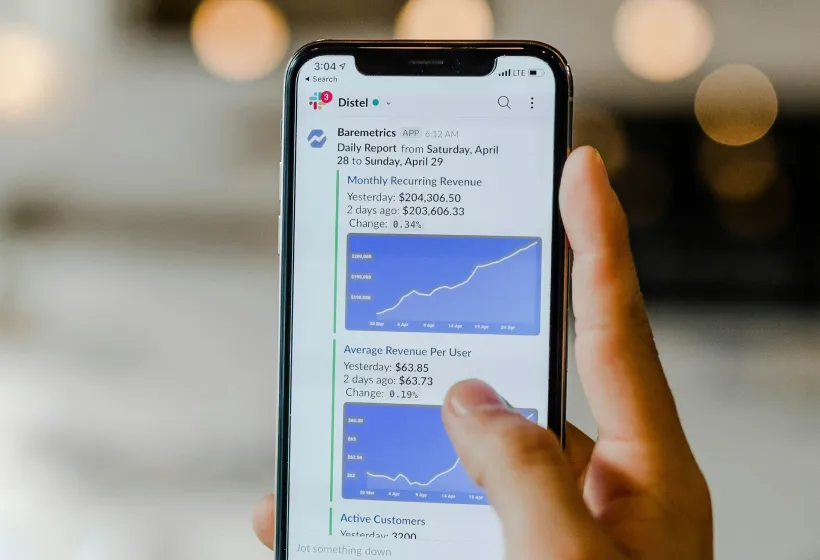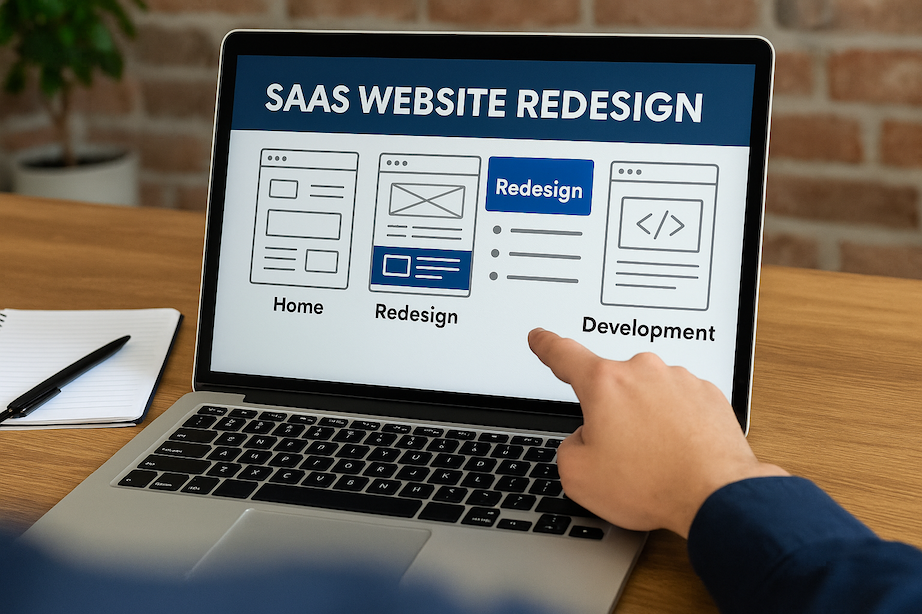Why Fast Website Launches Matter for Tech Startups

When a tech company secures funding, timelines accelerate. Investors expect progress, and that often means showing traction sooner rather than later. A company's website becomes a key part of that story, serving as the first place people go to understand the product, the team, and the opportunity.
For funded teams, a slow or delayed website launch can impact more than just marketing. It can create friction in sales, reduce trust, and delay validation in a competitive market. In fast-moving industries, even a few weeks can make a difference.
This article breaks down why fast website launches matter for funded tech teams, starting with the role of page speed.
What Is Page Speed and Why It Matters for Funded Tech Teams
Page speed refers to how quickly the content on a web page loads and becomes visible to a visitor. It is measured by metrics like Time to First Byte (TTFB), First Contentful Paint (FCP), and Largest Contentful Paint (LCP). Site performance is a broader term that includes page speed along with other factors like responsiveness and stability.
For funded tech companies, page speed plays a heightened role because these teams operate under time-sensitive conditions. A slow website can delay momentum in several ways:
- Market positioning: Competitors can establish themselves first while you're still finalizing your site
- User acquisition: Slower websites convert fewer visitors into leads or customers
- Investor confidence: Delays in launching a website can signal execution problems
According to Google research, 53% of mobile users leave a page that takes longer than three seconds to load. Even small delays matter: studies show that a one-second delay in load time can reduce conversions by up to 7%.
Fast website launches matter for funded tech teams because they directly impact conversion rates, market positioning, and investor confidence while providing competitive advantages in rapidly evolving markets.
How Speed of Website Affects Conversions and Revenue
The relationship between website speed and business results is well-documented. When pages load faster, more visitors stay, explore, and take action. When pages load slowly, visitors leave before engaging with your content.
This relationship affects key metrics that funded tech companies track:
- Bounce Rate Impact: Each additional second of load time increases bounce rates. BBC found they lose 10% of users for every additional second their site takes to load. For tech products, this means fewer demo requests or trial signups.
- User Experience: A fast site feels reliable and professional. Users can navigate, read, and interact without frustration. This is especially important for B2B tech companies where users evaluate product features or pricing plans.
- Conversion Funnel: Speed affects every step from initial visit to form submission. Slow loading creates drop-off points throughout the customer journey, reducing overall conversion rates.
These metrics directly connect to investor-focused KPIs like customer acquisition cost (CAC), marketing qualified leads (MQLs), and conversion rates. A faster website supports these outcomes by reducing friction and improving completion rates.
Why Page Speed Matters for SEO and Brand Perception
Google uses performance metrics called Core Web Vitals to evaluate website speed and user experience. These metrics include:
- Largest Contentful Paint (LCP): How quickly the main content loads
- Interaction to Next Paint (INP): How quickly a page responds to user input
- Cumulative Layout Shift (CLS): How stable the page is as it loads
These factors affect search rankings, which impacts organic visibility. Better rankings mean more traffic without additional ad spend, an important consideration for funded companies watching their burn rate.
Beyond search rankings, site speed shapes how visitors perceive your company:
- First Impressions: A fast-loading site creates a positive first impression, while a slow site can make visitors question your technical competence.
- Perceived Credibility: Speed signals professionalism and attention to detail, qualities that matter to both customers and investors.
- Competitive Differentiation: In markets where products have similar features, a faster digital experience can help one brand stand out.
When The Economic Times improved their site speed metrics, they saw a 43% reduction in bounce rate. This improvement helped both their search visibility and user engagement metrics.
Essential Site Performance Factors for a Fast Launch
1. Hosting Environment
Your hosting environment is where your website's files are stored and served to visitors. The quality and configuration of this environment directly affects how quickly your pages load.
Content Delivery Networks (CDNs) store copies of your website in multiple locations around the world. When someone visits your site, the CDN delivers content from the location closest to them, reducing load times.
For tech products with global audiences, selecting the right hosting solution and implementing a CDN can significantly improve performance across regions and devices.
2. Code and Framework Optimizations
Clean, efficient code reduces the processing time needed to render a page. Common optimizations include:
- Minifying CSS and JavaScript files to reduce file size
- Eliminating unused code that slows down page rendering
- Reducing the number of HTTP requests needed to load a page
The choice of framework (React, Vue, Next.js, etc.) also affects performance. Some frameworks offer better options for server-side rendering or static site generation, which can improve initial load times.
3. Lightweight Design Choices
Design decisions directly impact load times. Heavy elements like large images, complex animations, or third-party widgets can significantly slow down performance.
Image optimization techniques include:
- Resizing images to appropriate dimensions
- Compressing file sizes without reducing quality
- Using modern formats like WebP that load faster
Fast websites can still look premium. Using system fonts, limiting color palettes, and focusing on clean layouts creates a professional appearance without the performance penalty of complex designs.
Common Pitfalls Slowing Your Launch Timeline
1. Overly Complex Approval Processes
When too many people need to approve each website element, launches get delayed. This is especially problematic for funded companies where time equals runway.
Instead of requiring full-team consensus on every decision, consider:
- Assigning a single decision-maker for each project phase
- Setting clear approval deadlines with default approvals if no feedback is received
- Using pre-approved design systems to reduce the need for case-by-case decisions
These approaches maintain quality control while preventing the delays that complex approval chains create.
2. Poor Coordination Between Teams
Siloed teams create handoff problems. When design, development, and marketing work separately, issues often surface late in the process, causing rework and delays.
Better coordination methods include:
- Cross-functional kickoff meetings where all teams align on goals and timelines
- Shared project management tools that make dependencies visible
- Regular check-ins to identify potential blockers early
Many tech teams find that agile methodologies work well for website projects. Breaking the work into two-week sprints allows for regular progress reviews and faster course correction when needed.
3. Underestimating Content and Copy Requirements
Content creation is often the biggest bottleneck in website launches. Pages cannot be completed without finalized messaging, yet content development frequently starts too late in the process.
To avoid content delays:
- Begin content planning during the strategy phase
- Create templates and examples to guide writers
- Develop content in parallel with design rather than waiting until designs are complete
For tech companies, messaging clarity is particularly important. If visitors don't quickly understand what your product does and why it matters, they won't convert,regardless of how fast your site loads.
Best Practices for Quick Deployment Without Sacrificing Quality
1. Minimum Viable Launch Scope
A minimum viable product (MVP) website includes only what's essential for launch. For funded tech companies, this typically means:
- Homepage with clear value proposition
- Product or solution overview
- Simple lead capture mechanism
- Basic about/team information
Features that can wait for post-launch updates include detailed case studies, resource libraries, and complex animations. By focusing on the core elements first, you can launch faster and iterate based on actual user data.
2. Agile Development Cycles
Agile development uses short work cycles called sprints (usually 1-2 weeks) to make steady progress. Each sprint delivers specific, working components of the website.
This approach works well for funded companies because:
- It creates visible progress at regular intervals
- It allows for adaptation as requirements evolve
- It aligns with investor reporting cycles
Teams can show concrete achievements every two weeks rather than waiting months for a complete site.
3. Pre-Launch Testing and QA
Efficient testing processes identify critical issues without creating unnecessary delays. Focus testing efforts on:
- Browser compatibility across major platforms
- Mobile responsiveness at common screen sizes
- Functionality of key conversion points like forms and buttons
Automated testing tools can handle many of these checks without manual review of every page. The goal is to ensure the site works well for most users, not to achieve perfection in every edge case.
Accelerating Growth and Next Steps for Funded Tech Teams
Fast website launches help funded tech companies maintain momentum by supporting conversion rates, meeting investor timelines, and establishing market presence quickly. A streamlined launch process reduces delays and allows teams to test and refine their messaging without long wait times between updates.
For teams looking to improve launch speed, start by defining what's truly essential for version one. Use sprint-based development to make steady progress, and align content creation with design from the beginning. Focus testing on critical functionality rather than perfection in every detail.
A performance-optimized website not only launches faster but also converts better once it's live. This creates a virtuous cycle where better conversion rates lead to improved metrics to share with investors.
Ready to launch an agile, conversion-focused website in weeks, not months?
Get your free homepage wireframe
FAQs About Fast Website Launches for Funded Tech Teams
How long should a website launch take for a funded tech company?
A website launch for a funded tech company typically takes 4 to 8 weeks with a standard process, though specialized agencies can complete launches in as little as 7 to 21 days when project parameters are clearly defined.
What is the ideal page load time for a tech company website?
The ideal page load time for a tech company website is under 2 seconds, as research shows conversion rates may decrease by approximately 7% for each additional second of load time.
How does website speed affect investor perception of a tech company?
Website speed influences investor perception by demonstrating technical competence and attention to detail, qualities that signal a team's ability to execute effectively on their broader business vision.
What are Core Web Vitals and why do they matter for tech websites?
Core Web Vitals are Google's metrics for measuring user experience, including loading performance (LCP), interactivity (INP), and visual stability (CLS), which directly impact search rankings and visibility for tech websites.





